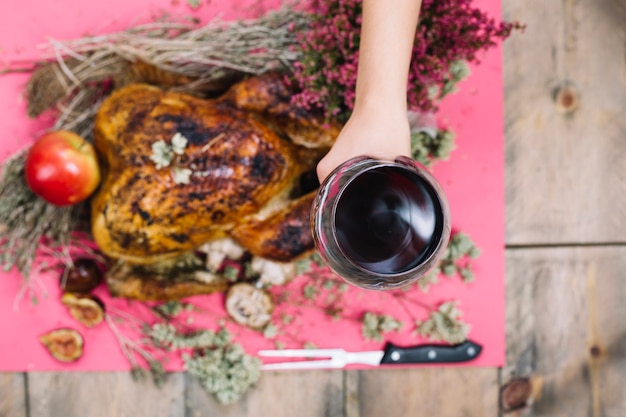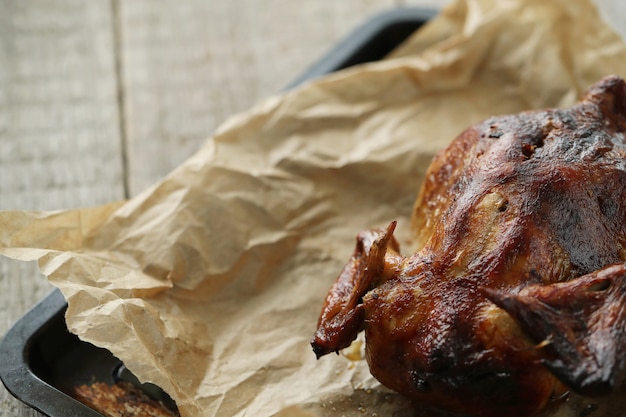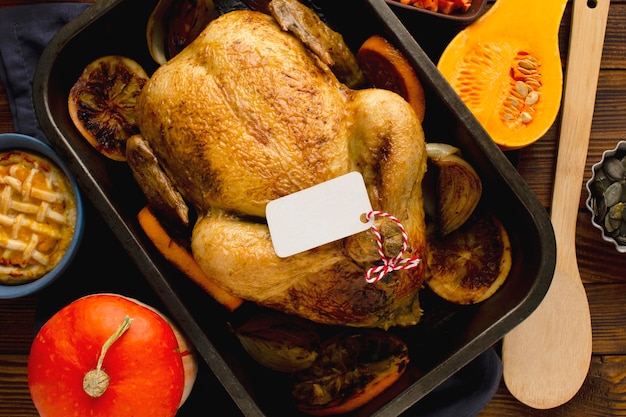Right, let’s talk turkey. Or, more specifically, let's talk about how to cook a turkey to absolute perfection in an electric roaster. This is a subject close to my heart, and one I've spent many years perfecting. Because let's face it, a dry, overcooked turkey is a culinary tragedy. No one wants that.
We've all been there: staring at that magnificent bird, wondering how long on earth it's going to take to cook. And when you’ve got a whole family waiting to tuck in, you want to get it right. That’s where my trusty electric roaster comes in. It’s a lifesaver, especially during the festive season when the oven’s already packed with side dishes.
But how do you know how long to cook that turkey for? Fear not, my friends, because I'm about to spill the beans on all the secrets to a juicy, perfectly cooked turkey in your electric roaster.
(Part 1)
Getting Started: Choosing the Right Turkey

First things first, you need to choose the right turkey. I’ve learned a few things over the years, and I’ll share them with you.
Fresh or Frozen?
Now, this is a biggie, isn’t it? Fresh turkey, all plump and glistening, or frozen, ready to thaw? I’m a bit of a traditionalist, so I tend to go for fresh, especially if I can find a lovely free-range bird. It just seems to have a more intense flavor. But frozen is perfectly fine too, just make sure you allow plenty of time for it to thaw in the fridge.
Size Matters
Next up, the size. You’ll need to know the weight of your turkey because that’s what determines the cooking time. You don't want a turkey that's too small, or you'll be left with a few hungry guests. It's also a good idea to consider your roaster’s capacity and make sure the bird will fit comfortably. I usually aim for around 10-12 pounds.
Pre-Brining: A Game-Changer
Now, here’s a tip you won’t regret: pre-brining. It’s a bit of a faff, but it makes a world of difference. It basically involves soaking the turkey in a salt water solution, which draws moisture into the meat, ensuring it stays juicy and tender. You can find lots of recipes online, but I usually use a simple mix of water, salt, and a few aromatics like peppercorns and bay leaves.
Why bother with brining? It's really about creating a more flavorful and moist turkey. The salt helps to break down the proteins in the meat, which results in a more tender texture. It also enhances the natural flavor of the turkey. I've been using this method for years, and I can honestly say it's a game-changer. The difference is noticeable, especially with a larger turkey.
The Magic of the Electric Roaster

Okay, so you’ve got your turkey, it’s thawed (if necessary), and it’s pre-brined (if you’re feeling fancy). Now it’s time to unleash the power of the electric roaster.
Benefits of Electric Roasting
Why use an electric roaster? Well, it’s a real game-changer. First off, it’s super easy to use. Just pop the turkey in, set the temperature, and walk away. No fiddling with ovens, no worrying about uneven cooking. The roaster does all the work for you, which is perfect if you've got other dishes to prepare.
Plus, it’s incredibly versatile. You can use it for all sorts of dishes, not just turkey. I’ve used mine to roast pork, beef, lamb, and even chicken. It’s a great way to cook a large meal without using up all your oven space.
Safety First
Now, before we get to the cooking, let’s talk safety. Always make sure your roaster is plugged in securely. And never, ever, leave it unattended when it’s switched on. I know it seems obvious, but you’d be surprised how easily accidents can happen.
Turkey Time: Cooking it Right

Right, the moment of truth. How long do you cook that turkey, you ask? Well, it depends on the weight, of course, and whether you’re using a pre-brined bird.
Calculating Cooking Time
Here’s a rough guide, but I always recommend checking the roaster’s instructions for more precise times.
| turkey weight (lbs) | Unbrined Cooking Time (hours) | Brined Cooking Time (hours) |
|---|---|---|
| 10-12 | 3-4 | 2.5-3.5 |
| 12-14 | 4-5 | 3.5-4.5 |
| 14-16 | 5-6 | 4.5-5.5 |
Remember, these are just estimates. You always want to err on the side of caution and cook for a little longer if you’re unsure. It’s better to have a slightly overcooked turkey than an undercooked one.
Temperature is Key
It’s not just about time; it’s also about temperature. The turkey is cooked through when the internal temperature reaches 165°F (74°C). You can use a meat thermometer to check, or many roasters have built-in probes. It’s a good idea to check the temperature in multiple parts of the turkey, including the thickest part of the thigh and the breast, to ensure it’s cooked evenly.
The perfect roast: Tips and Tricks
Now that you’ve got the basics down, let’s talk about some tips and tricks to ensure you get that perfectly roasted turkey.
Roasting Technique
I’ve found that roasting the turkey breast-side down for the first half of the cooking time helps ensure even browning and juicy results. This technique helps to distribute the heat evenly and prevents the breast from drying out too quickly. After that, I flip it over for the remainder of the time to allow the breast to brown and crisp up.
Basting is Your Friend
Basting is a real lifesaver. It involves spooning the pan drippings over the turkey every hour or so, which helps keep it moist and flavorful. You can use a turkey baster, or even a ladle. The drippings are full of flavor, and basting helps to distribute it throughout the turkey.
Stuffing: Yes or No?
Now, this is a bit of a debate. Some people swear by stuffing the turkey, while others prefer to cook it separately. If you’re going for the traditional stuffed turkey, make sure you stuff it loosely and cook it thoroughly. The stuffing should be cooked to an internal temperature of 165°F (74°C). However, I prefer to cook the stuffing separately in a casserole dish, as it allows me to control the cooking process better and ensures the stuffing is cooked to perfection.
(Part 2)
Dealing with a Few Challenges
We’ve all been there. Things don’t always go to plan, do they? So, let’s tackle some common turkey roasting challenges and how to overcome them.
The Turkey is Dry
This is a common complaint, especially if you’re not careful with cooking times or basting. But don’t despair! A little gravy can go a long way. If your turkey is a bit dry, you can add some gravy to the pan drippings and serve it over the meat. It’s also a good idea to let the turkey rest for at least 30 minutes after cooking to allow the juices to redistribute.
The Turkey is Overcooked
No one wants a dry, tough turkey. To avoid this, make sure you’re not cooking it for too long. And use a meat thermometer to check the internal temperature. If it’s overcooked, it’s not the end of the world. You can try adding a little moisture by serving it with a delicious sauce.
The Turkey Isn’t Browning Enough
This can happen if your roaster isn’t getting hot enough. Check the settings and ensure it’s on high. You can also try basting more frequently to help promote browning. You can also try using a broiler for a few minutes at the end of the cooking time to give the turkey a nice golden brown crust.
Finishing Touches: Serving Up the Feast
So, you’ve got your perfectly cooked turkey. Now it’s time to celebrate!
Carving the Turkey
This is where a sharp carving knife comes in handy. Start by removing the legs and thighs, then work your way to the breast. Cut the breast into thin slices and arrange them on a platter. It’s a good idea to carve the turkey while it’s still warm, as the meat will be more tender.
Accompanying Dishes
What goes with a roasted turkey? Well, you can’t go wrong with classic sides like roast potatoes, stuffing, gravy, and cranberry sauce. But get creative! Add some seasonal vegetables like Brussels sprouts or parsnips. I like to serve my turkey with a medley of roasted root vegetables, and a simple green salad. A good gravy is essential, and I usually make mine from the pan drippings.
Enjoy the Feast
And now for the best part – enjoying your hard work. Gather your loved ones, share some laughter, and savor the deliciousness of a perfectly roasted turkey.
(Part 3)
FAQs: Your Turkey Roasting Questions Answered
Let's tackle some of the most common questions about roasting turkey in an electric roaster.
1. Can I use a frozen turkey in an electric roaster?
Yes, you can use a frozen turkey in an electric roaster. But you need to defrost it completely before cooking. It’s best to thaw it in the fridge for several days, making sure it’s fully defrosted before putting it in the roaster. You can also thaw a turkey in cold water, but you need to change the water every 30 minutes to ensure it stays cold.
2. What if my turkey isn’t fitting in the roaster?
If your turkey is too big for your roaster, you might have to adjust the cooking time. You can also try removing the wings, which can save some space. If you're still struggling, you might need to consider a smaller turkey or a different cooking method.
3. What should I do if the turkey is sticking to the roaster?
A little bit of oil or cooking spray can help prevent sticking. You can also line the roaster with aluminum foil, which makes for easier cleanup. It’s also a good idea to use a roasting rack to elevate the turkey, which allows for better air circulation and prevents it from sticking to the bottom of the roaster.
4. Can I cook other things in an electric roaster?
Absolutely! Electric roasters are incredibly versatile. You can use them to cook roasts, casseroles, stews, even desserts. I’ve even used mine to bake a cake.
5. Is it safe to leave the electric roaster on overnight?
No, it’s not safe to leave an electric roaster on overnight. Always unplug it when you’re not actively using it. And make sure you turn off the roaster at the end of the cooking time, as it can continue to cook for a while even after the timer goes off.
A Final Word
There you have it, folks! My ultimate guide to roasting a turkey in an electric roaster. I hope this has given you the confidence to tackle your next turkey feast. Remember, it’s all about practice, and don’t be afraid to experiment. Just remember to enjoy the process, because it’s all part of the fun. Happy roasting!
Everyone is watching

How to Cook Frozen Lobster Tails Perfectly: A Step-by-Step Guide
RecipesLobster. Just the word conjures up images of lavish meals, special occasions, and a taste of luxury. But let's...

Pigs in a Blanket Cooking Time: How Long to Bake for Perfect Results
RecipesAh, pigs in a blanket. Just the name conjures up images of those delightful little parcels of crispy pastry en...

Pork Fillet Cooking Time: How Long to Cook It Perfectly
RecipesPork fillet, or tenderloin as it's sometimes called, is a real favourite in our house. It's so versatile, and...

The Ultimate Guide to Tender, Juicy Pulled Pork
RecipesRight, let's talk pulled pork. It's one of those dishes that just screams "comfort food," doesn't it? I mean...

The Ultimate Guide to Cooking Sweet Potatoes: From Roasting to Mashing
RecipesSweet potatoes. Just the name conjures up images of warm, comforting dishes, bursts of vibrant color, and a to...
